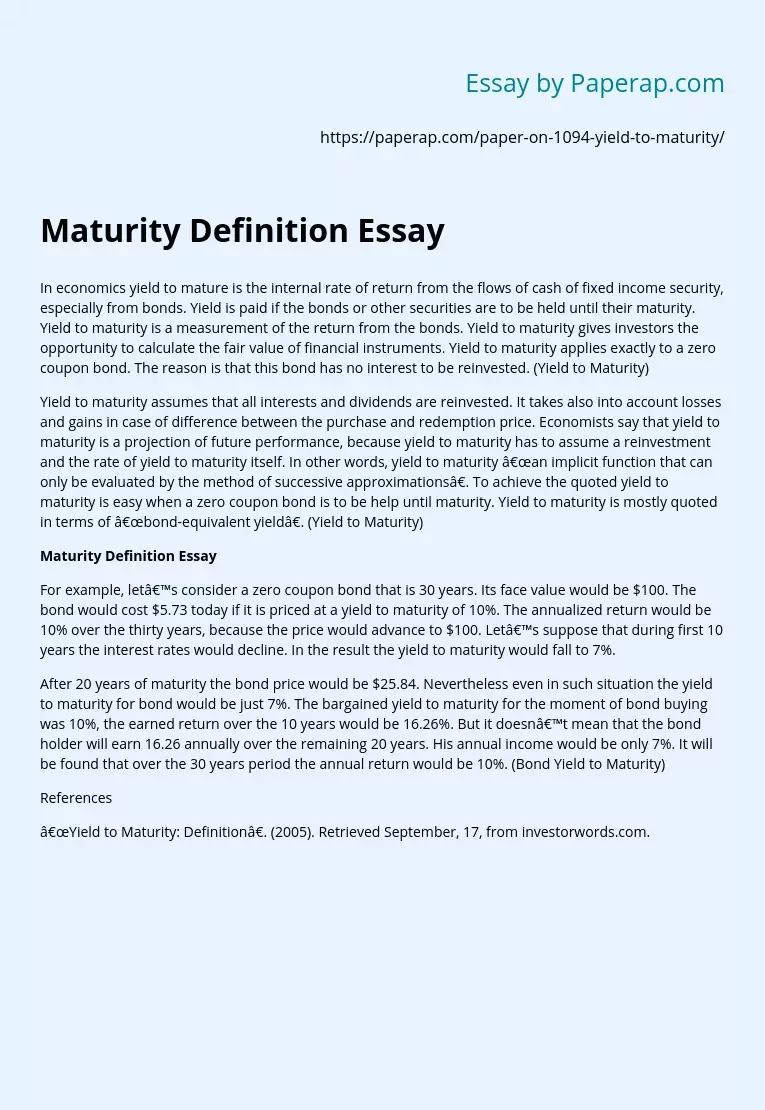Maturity Definition Essay
In economics yield to mature is the internal rate of return from the flows of cash of fixed income security, especially from bonds. Yield is paid if the bonds or other securities are to be held until their maturity. Yield to maturity is a measurement of the return from the bonds. Yield to maturity gives investors the opportunity to calculate the fair value of financial instruments. Yield to maturity applies exactly to a zero coupon bond. The reason is that this bond has no interest to be reinvested.
(Yield to Maturity)
Yield to maturity assumes that all interests and dividends are reinvested. It takes also into account losses and gains in case of difference between the purchase and redemption price. Economists say that yield to maturity is a projection of future performance, because yield to maturity has to assume a reinvestment and the rate of yield to maturity itself. In other words, yield to maturity “an implicit function that can only be evaluated by the method of successive approximations”.
To achieve the quoted yield to maturity is easy when a zero coupon bond is to be help until maturity. Yield to maturity is mostly quoted in terms of “bond-equivalent yield”. (Yield to Maturity)
Maturity Definition Essay
For example, let’s consider a zero coupon bond that is 30 years. Its face value would be $100. The bond would cost $5.73 today if it is priced at a yield to maturity of 10%. The annualized return would be 10% over the thirty years, because the price would advance to 0.
Let’s suppose that during first 10 years the interest rates would decline. In the result the yield to maturity would fall to 7%.
After 20 years of maturity the bond price would be $25.84. Nevertheless even in such situation the yield to maturity for bond would be just 7%. The bargained yield to maturity for the moment of bond buying was 10%, the earned return over the 10 years would be 16.26%. But it doesn’t mean that the bond holder will earn 16.26 annually over the remaining 20 years. His annual income would be only 7%. It will be found that over the 30 years period the annual return would be 10%. (Bond Yield to Maturity)
References
“Yield to Maturity: Definition”. (2005). Retrieved September, 17, from investorwords.com.
Maturity Definition Essay. (2019, Dec 05). Retrieved from https://paperap.com/paper-on-1094-yield-to-maturity/

